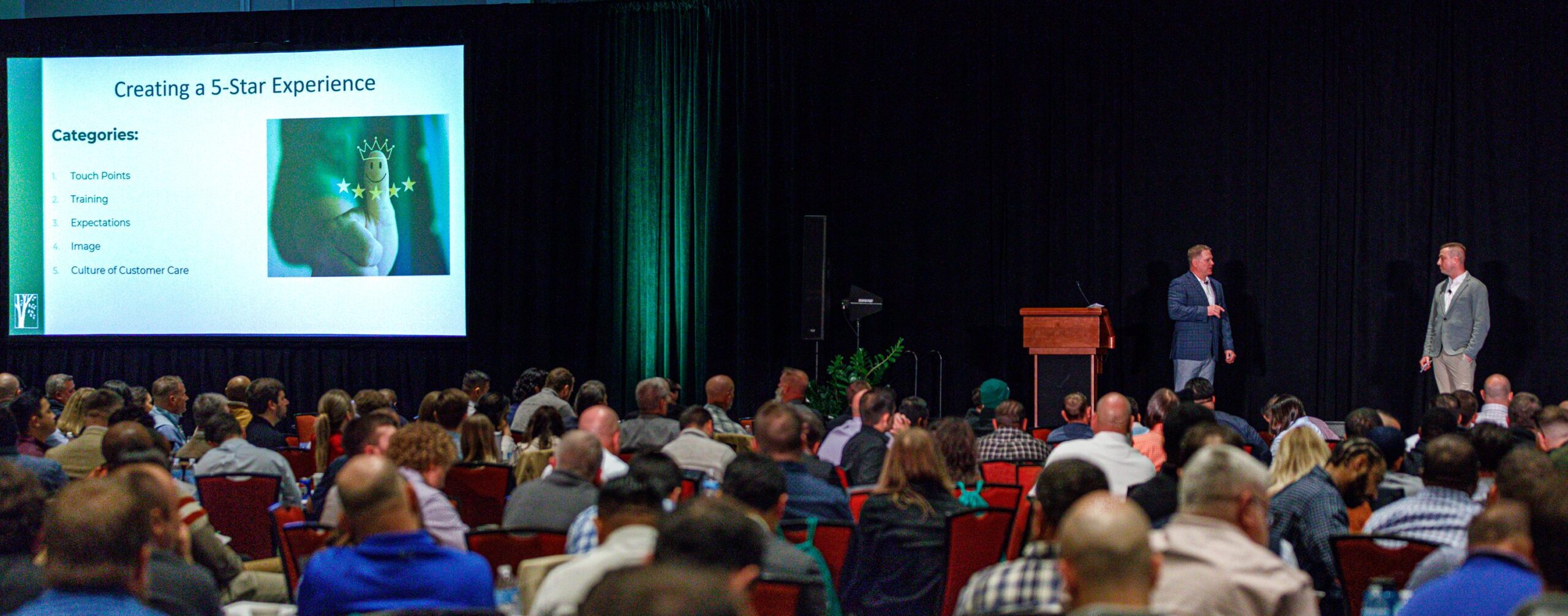By Jason Dixon, Director of Business Development, Landscape Management Division & Paul Pestun, VP of Business Development, Landscape Construction Division
 Jason and Paul presented this topic to the entire group during Day 1 of our recent Management Development Days conference. We hope that this article serves as a refresher for those who attended and an opportunity for all our team members to reevaluate their relationships with both internal and external customers.
Jason and Paul presented this topic to the entire group during Day 1 of our recent Management Development Days conference. We hope that this article serves as a refresher for those who attended and an opportunity for all our team members to reevaluate their relationships with both internal and external customers.
In today’s competitive business landscape, providing a five-star customer experience is no longer just a lofty goal; it’s a necessity for long-term success. Every interaction, whether with external customers or internal teams, plays a crucial role in shaping perceptions and fostering loyalty. However, achieving this level of excellence requires a strategic approach that addresses various aspects of the customer journey.
At the heart of delivering a five-star customer experience lies effective communication. Too often, issues arise due to miscommunication or a lack thereof, leading to dissatisfaction and lost opportunities. By identifying communication gaps, both with external clients and internal stakeholders, we can pinpoint the root cause of problems and proactively address them.
To break down the process of creating a stellar customer experience, let’s delve into five key areas of focus:
- Touch Points: Every interaction with customers presents an opportunity to make a positive impression. From initial inquiries, site visits, PSRs, quality assessments, email follow-ups, and even industry events, each touch point should be carefully crafted to exceed expectations and leave a lasting impact. By mapping out these touchpoints, we can identify areas for improvement and enhance the overall customer journey.
- Training: Investing in training is essential for empowering both employees and customers alike. Our internal training programs focus on developing skills and habits while fostering a customer-centric mindset among team members. Additionally, providing resources and guidance to customers ensures they have the knowledge and tools needed to make the most of their experience (e.g. how to submit requests, who is their main contact, etc).
- Expectations: Clear communication and transparency are key to setting appropriate expectations. Whether it’s outlining deliverables, timelines, or service levels, ensuring alignment between what is promised and what is delivered is crucial for building trust and avoiding disappointment. For example, setting expectations early about your availability and when/how you best communicate helps them feel heard while respecting your work-life balance.
- Image: Perception is everything in today’s image-driven world. This extends from the physical (trucks/trailers, uniforms) to how we present ourselves online, via email/phone, and in person. By presenting a cohesive and compelling image, we can instill a sense of confidence and loyalty in our brand. As the customer’s point of contact, your behavior represents the company—even when you’re off the clock.
- Cultivating a Culture of Customer Care: We often say, “This is a people business, not a plant business.” That means the quality of our relationships is equally, if not more, important than the quality of our work. To improve those relationships, we need to double our exposure (i.e. touchpoints) and amplify that communication. Find out what are your customer’s job success criteria and score yourself on those points.
Ultimately, this requires a collective effort across the entire organization. Creating a five-star customer experience is a multifaceted endeavor that requires attention to detail and a commitment to continuous improvement. Incorporating these principles into everyday practices will empower us to bridge communication gaps, elevate the customer experience, and foster long-term loyalty among customers and employees alike.